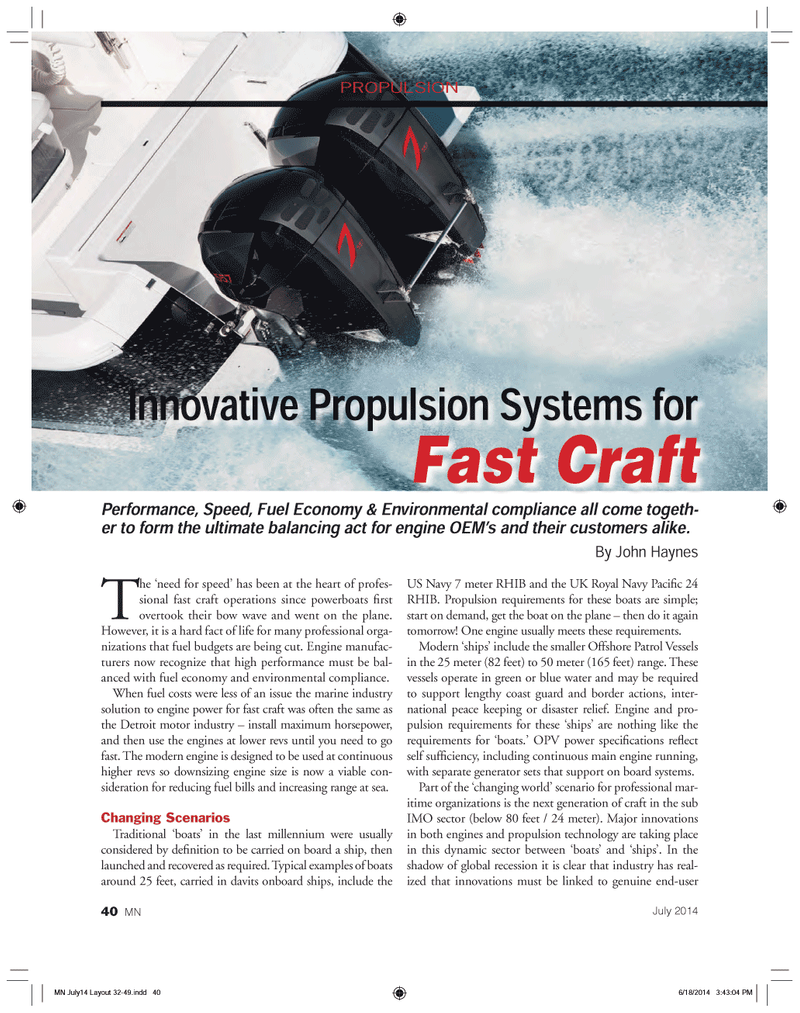
Page 40: of Marine News Magazine (July 2014)
ATB Technical Trends
Read this page in Pdf, Flash or Html5 edition of July 2014 Marine News Magazine
PROPULSIONThe ?need for speed? has been at the heart of profes- sional fast craft operations since powerboats rst overtook their bow wave and went on the plane. However, it is a hard fact of life for many professional orga- nizations that fuel budgets are being cut. Engine manufac- turers now recognize that high performance must be bal- anced with fuel economy and environmental compliance. When fuel costs were less of an issue the marine industry solution to engine power for fast craft was often the same as the Detroit motor industry ? install maximum horsepower, and then use the engines at lower revs until you need to go fast. The modern engine is designed to be used at continuous higher revs so downsizing engine size is now a viable con- sideration for reducing fuel bills and increasing range at sea. Changing ScenariosTraditional ?boats? in the last millennium were usually considered by de nition to be carried on board a ship, then launched and recovered as required. Typical examples of boats around 25 feet, carried in davits onboard ships, include the US Navy 7 meter RHIB and the UK Royal Navy Paci c 24 RHIB. Propulsion requirements for these boats are simple; start on demand, get the boat on the plane ? then do it again tomorrow! One engine usually meets these requirements. Modern ?ships? include the smaller Offshore Patrol Vessels in the 25 meter (82 feet) to 50 meter (165 feet) range. These vessels operate in green or blue water and may be required to support lengthy coast guard and border actions, inter- national peace keeping or disaster relief. Engine and pro- pulsion requirements for these ?ships? are nothing like the requirements for ?boats.? OPV power speci cations re ect self suf ciency, including continuous main engine running, with separate generator sets that support on board systems. Part of the ?changing world? scenario for professional mar- itime organizations is the next generation of craft in the sub IMO sector (below 80 feet / 24 meter). Major innovations in both engines and propulsion technology are taking place in this dynamic sector between ?boats? and ?ships?. In the shadow of global recession it is clear that industry has real- ized that innovations must be linked to genuine end-user Innovative Propulsion Systems for Fast CraftPerformance, Speed, Fuel Economy & Environmental compliance all come togeth- er to form the ultimate balancing act for engine OEM?s and their customers alike. By John Haynes July 201440 MNMN July14 Layout 32-49.indd 40MN July14 Layout 32-49.indd 406/18/2014 3:43:04 PM6/18/2014 3:43:04 PM

 39
39

 41
41
